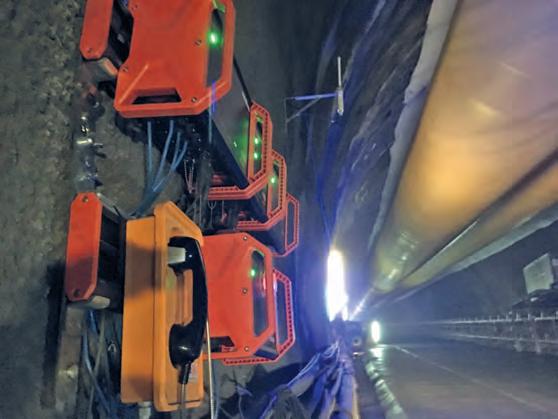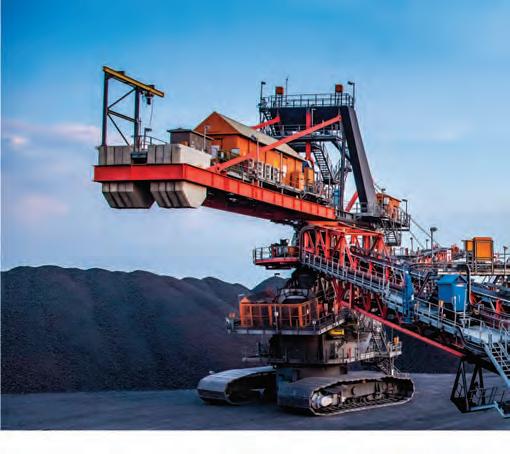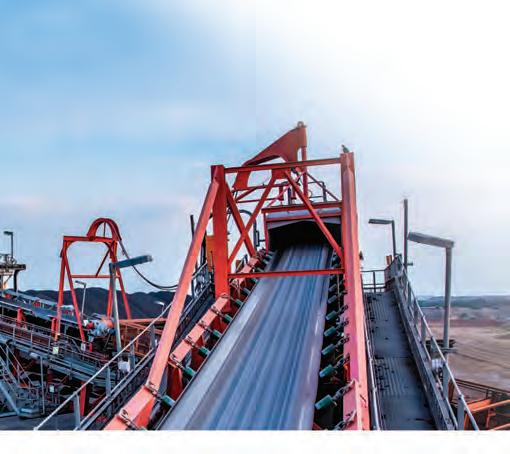
58 minute read
NETWORKS

Future proofed networks
Advertisement

As demands on mining networks continue to increase due to greater use of digital technologies, high resolution cameras and automation, Paul Moore reviews some key surface and underground solutions and how they are meeting the challenge
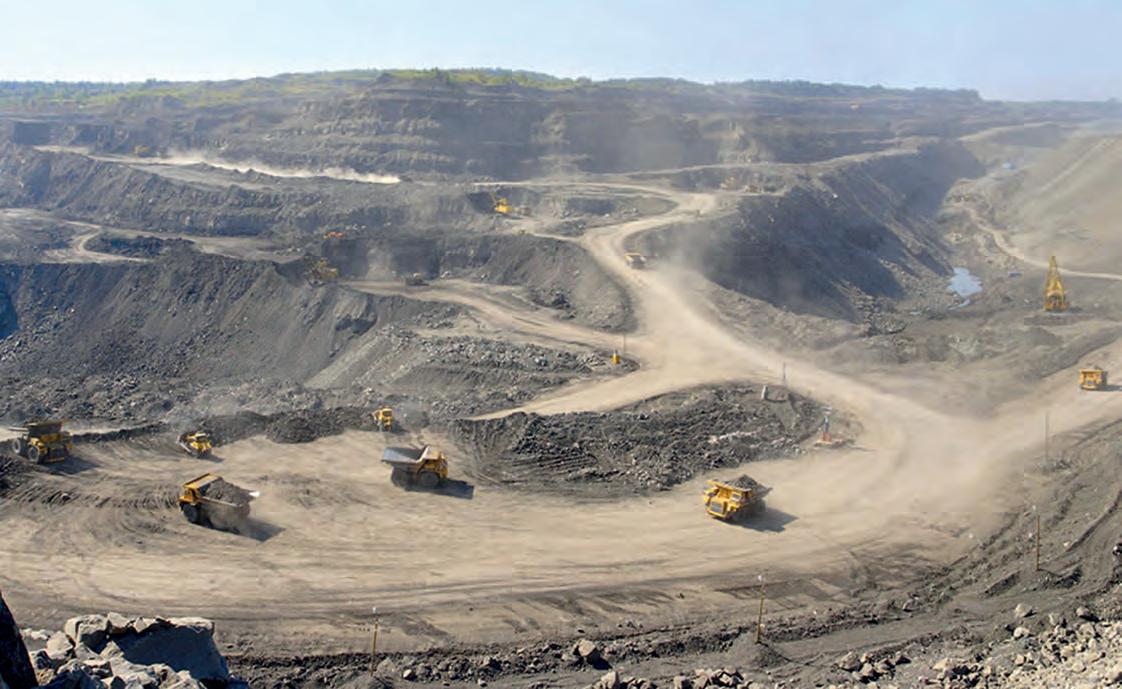
New mining technologies continue to enter the market at an astounding pace. It’s no surprise considering the contribution mining makes to the world economy. Last year it was reported the industry added more than $111 billion to the US economy alone. Everyone working in the industry knows how competitive it can be, which explains why more and more technology-based solutions enter this space.
And mining networks are no exception. While there has been and is significant uptake of LTE (which stands for Long Term Evolution), also known as 4G LTE, network technology in mining – it is important to recognise the continued importance of wireless mesh networks and WiFi in mining, for which there are good reasons. One of the most innovative and reliable systems used in mining is the self-optimising mesh network solution from Rajant Corporation, where IM spoke in some detail to Todd Rigby, Director of Sales. “There are applications for managing fleets, monitoring equipment health, tracking operator alertness, and measuring slope stability. There are also applications for mapping ore bodies, increasing drill accuracy, and loading efficiency. Video surveillance has been around for many years, while drones have come along more recently. Aerial surveys were once a novelty but now are commonplace. The idea of autonomous equipment has become a reality. Man/asset tracking has been common underground and is now starting to find its way into open pits.”
Whether an operation is open pit or underground, operators face the same challenges. “You are keeping in constant contact with your equipment and personnel, even at the working face. And ensuring you have sufficient bandwidth for the ever-increasing list of technology applications running in your mine. All wireless communications are not equal. Rajant stands alone when it comes to self-optimising networks. All other wireless networks run on a static configuration. I recall a concept my high school science teacher taught called entropy. Entropy is the idea that the universe is in a constant state of change. This applies to the environment, and it also applies to your operation. Data loads vary, machines are moving, static electricity in the air constantly changes as does the weather. All of these things ultimately impact your network. Static network configurations are manifest in inconsistent throughput and or loss of coverage or connection.”
Designed from the ground up to be better
Rajant’s Kinetic Mesh technology allows every radio in each node to have many redundant connections. This applies to fixed and mobile nodes. Using distributed intelligence instead of a master control node, each Rajant BreadCrumb® selects the best route to ensure maximum performance. “Rajant supports mobile-to-mobile communication, which dramatically improves coverage and performance. Additionally, nodes can change how they interact with one another autonomously. Collectively, this allows the network to self-optimise continuously. It is a fact that LTE carriers employ one or two engineers to always monitor hundreds of towers in a city and make adjustments to the configuration. The last time I checked, engineers are expensive. In a Rajant network, each BreadCrumb radio node has the intelligence to modify routing and configuration many times per second, autonomously. Not a single person has to be involved reducing the overall cost. If you suspect having better performance is more expensive, you would be mistaken. There is no more costeffective network to operate than Rajant Kinetic Mesh®.”
Rajant’s Rigby argues that it does not employ break-before-make, or make-before-break. “Instead, Rajant Kinetic Mesh is make-makemake-never-break. The act of adding new connections is entirely independent of breaking a weak connection. And since the BreadCrumb is always sending data across the highest performing connection, there is no decrease in data rate, even when a vehicle or machine is moving at a high rate of speed. Imagine your machine’s network connection performing the same, whether it is moving at full speed or stationery. It works as a virtual ethernet connection.”
It is possible because Rajant uses a proprietary networking protocol named
Rajant Corp says it stands alone when it comes to self-optimising wireless mesh networks
The digitalisation of mining is well underway
Jaime Laguna, Head of Mining and Oil and Gas practice for Nokia tells IM that private wireless is accelerating in mining
“Only a short while ago, any discussion of the digital transformation of mining would likely have begun with a recognition that mining has been slow to come to the digital party and has a lot of catching up to do. From Nokia’s vantage point, providing high-performance 4.9G/LTE private wireless networks to mines, the industry is definitely getting on the digital track. The adoption of digital still has a way to go in many mines, but it is well integrated into daily mining operations at the world’s biggest mines. As well, it is starting to be integrated within younger miners with relatively small operations but with the same requirements for cost optimisation and productivity. Digital innovations around automation and teleremote and autonomous operations have proven themselves to be more productive, safe and sustainable, and the industry now recognises that it is the future.
“Nokia currently has digitalisation projects running with four out of the top five global mining operators as well as with early users of 5G technology. Our push over the last few years has been to introduce mining IT and OT teams to the potential of industrial-strength private wireless to make new use cases and applications possible. Today, more than 35 of our mining customers have trialled and/or deployed 4.9G/LTE private wireless networks to support their operations in 60 of their mines. Autonomous drilling and haulage is still the most common use case for our private wireless solution. Komatsu, which is a pioneer in mining automation, is now running more than half of its AHS production sites in Australia and the Americas on our private wireless networks.
“As 5G standards reach completion, many countries are moving to release 5G wireless spectrum for industrial use. The Australian spectrum regulator was an early pioneer in releasing 4G/LTE spectrum for mining, which in part explains the country’s leadership around autonomous haulage. They are again showing leadership on 5G. In some countries, we are also seeing mobile operators leading the way, building 5G-ready networks for the mining industry, such as Vivo for Vale, in Brazil, Claro for Minera Gold Fields, in Chile, and Shaw for Teck, in Canada. Some of the use cases that are possible today with 4G will have an evolution/enhancement with 5G like real-time V2V and V2X communication where connectivity will be substantially improved.
“The underground mining industry is also moving quickly to embrace digital. To advance digital underground mining solutions, we are working closely with Sandvik to develop innovative applications for the industry’s first 5G SA (standalone) network at its underground test facility in Tampere, Finland, as well as with Norcat and its ecosystem partners at their Underground Center in Sudbury, Canada. We have also successfully tested our solution at Nornickel’s Skalisty mining complex in Russia –Nornickel's first autonomous mine.
“Along with supporting mission-critical communications such as push-to-talk and push-tovideo, the focus for underground is for now less on autonomous and more on tele-remote control, which requires video and fast response times. These requirements demand the low latencies and high bandwidths that will be the key to driving 5G adoption. 5G will also support massive numbers of sensors relaying critical data on structural integrity, water leaks, air quality, gas levels, dust, noise and vibration to provide near-real time visibility into mine safety.
“As we look forward to the innovation work being carried out with our partners, there are multiple ways in which the digital transformation of mining is now looking beyond haulage and remote-control of vehicles. Digital twins are being used to map the locations of assets and personnel. Geo-location data can be used in conjunction with mapping software for safety applications, such as the geo-fencing of blast areas or unsafe zones, alerting and mustering personnel and even controlling vehicle movements.
“Geo-tracking data can also be used to analyse end-to-end processes using machine learning and AI for process optimisation. These advanced analytics capabilities have enormous potential for increasing mine safety and productivity. They can process data on everything from the health of workers to the maintenance profile of assets, enabling more precise predictive capabilities and ensuring maximum performance and safety. They can analyse sensor data and video information from drones to monitor environmental conditions and track the condition of everything from stockpiles and tailings dams to the performance of ventilation systems and wastewater management.
“The processing of the enormous amounts of sensor and device data will be done on the same edge cloud that supports the deployment of 5G. In this way, the data will be kept confidential to the mining operation and allow for split-second processing and decision-making for automated operations with the necessary local breakout.
“Some of the most futuristic applications that 5G will enable are augmented reality (AR) applications for personnel. These applications will combine environmental sensor information, health monitoring, geotracking of machines and other information that can be presented to workers using heads-up displays. Aided by remote experts over AR, workers can be trained in equipment operation and maintenance and guided in everything from the performance of complex tasks to mine evacuation during emergency events.
“Nokia is working closely with its innovation partners to bring these and many other applications to reality as well as offering different and flexible business models which include Network as a Service (NaaS) for options of OPEX vs CAPEX. With the adoption of robust and predictable wireless technologies for mine-wide critical connectivity, the digitalisation of mining is being unleashed. The case for digitalisation has been made with 4.9/LTE wireless. Now, with the release of 5G, we fully expect that next decade will see the digital transformation of the mining industry only accelerate.”


InstaMesh. “It defines how BreadCrumbs interact with one another. Rajant supports WiFi connectivity between WiFi client devices you already own and a Rajant BreadCrumb, as well and allowing you to plug any ethernet device directly into a BreadCrumb’s Ethernet port. The BreadCrumb network is a TCP/IP network that acts like a giant virtual Layer 2 switch for those readers who are technically inclined. For everyone else, it means you can continue to use existing point-to-point microwave systems, plug in existing video cameras, and connect all existing on-board applications.”
Rigby concludes: “Rajant supports quality of service (QoS). You don’t need a security network, a production network, and a processing network. You simply need a Rajant Kinetic Mesh. Rajant allows you to set application priority to run all or your applications on one single network. This dramatically simplifies your IT architecture when you can have a single network from pit-to-port. Rajant is the only wireless networking company that has received Suite B encryption certification by the National Security Administration (NSA). Granted, commercial products are not tested by the NSA. However, that does not stop Rajant customers from enabling Suite B or one of many other encryption options on its Rajant networks. Rajant’s intention is to keep all data safe.”
Nokia solutions for Salares Norte & Skalisty
Nokia has announced it is partnering with Claro Chile to equip the new Gold Fields Salares Norte mine with a high-performance private wireless network. The solution will support the automation of mining operations in different applications, such as trucks, excavators, drills and in the future, drones.
Being deployed is a private LTE/4.9G solution, including AirScale radio, small cells, packet core, IP routers and NetAct network management system. In total, the network will connect 150 sensors for operational processes, monitoring and accident prevention in addition to 72 connected vehicles and machines. Nokia and Claro will also provide professional services such as network design, testing and deployment. With this infrastructure, the network will enable critical voice, data, internet and video communications to improve employee safety, as well as operational efficiency and productivity.
“Mining operations require highly-reliable networks that can cover large outdoor sites or deep underground corridors. Industrial-grade private wireless solutions offer robust, secure and predictable wireless coverage for OT use cases’ critical connectivity. They also enable an evolution of new services in mining, with a trustworthy, high-capacity, low-latency and multi-services network that enables connectivity for several thousands of workers, machines, sensors and applications.”
Francisco Guzmán, Director of Claro empresas, said: “Business optimisation is key for companies. This is why we work hard to develop solutions to strengthen their technological development and to promote automated processes, making them safer and more efficient. In this case, by deploying ultra-reliable, high-performance, low-latency networks, we’ll be able to deliver the best tools and connectivity to support the development of mining 4.0, which is focused on digitising its operations, and what better than doing this with a partner like Nokia, that has world-class expertise and knowledge.”
Fernando Sosa, Head of Market Unit Southern Cone, Nokia, said: “Automation relies on the ability to sense, analyse and act. To do so, industries are connecting every sensor, machine and worker in the most flexible way — and for that they need business and mission-critical wireless networking solutions such as private LTE/4.9G. By working with Claro Chile to create such an automated ecosystem for Gold Fields, we are opening new opportunities for enterprises and other asset-intensive industries, such as energy and rail, throughout Chile.”
The implementation builds on Nokia’s leadership in private wireless technology and its growing range of mining projects in Latin America and around the world. Nokia has over 260 enterprise customers and more than 60 mines are powered by Nokia’s private LTE/4.9G and 5G networks. Furthermore, Claro empresas, a subsidiary of America Móvil group, has a range of flexible and adaptable digital solutions developed for the needs of connectivity, mobility, security, cloud, IoT, and data centre, that have positioned it as one of the most relevant players in the industry.
The partnership between Nokia and Claro “will boost opportunities for the Chilean market to digitalise, expanding the possibility of automation in mining, as well as other industries such as energy, railways, utilities and agriculture.”
Nornickel, the world’s largest producer of palladium and high-grade nickel and a major producer of platinum and copper, along with Nokia has successfully completed testing of a private LTE/5G-ready wireless network deployed in one of the mines of the Skalisty nickel-copper-

Nokia has announced it is partnering with Claro Chile to equip the new Gold Fields Salares Norte mine with a high-performance private wireless network



PGM mining enterprise at a depth of 875 m. The partners in this project were the telecom operator Tele2, Qualcomm and the company SPBEK-Mining.
Nornickel’s private wireless network was piloted simultaneously in 5G and LTE bands to support mission-critical and business-critical functions, such as reliable and secure voice and data communications, video surveillance, remote management of machinery through video channels, communications between production sites and the control centre, plus many others. The pilot network was deployed at the Skalisty mine at a depth of 875 m on the Nokia industrial-grade private wireless connected digital mine solution, including 4.9G/LTE and 5G core hardware and software, Flexi Zone Micro LTE and Nokia AirScale 5G base stations plus a special solution for mission-critical group communications.
The test confirmed that Nokia’s private LTE/5G-ready technologies can reliably support wireless broadband communication in a real-life underground mining environment. The results proved the feasibility and efficiency of a dedicated 4.9G/5G network operating as a unified data transfer environment for existing Nornickel platforms, as well as new digital products with different traffic profiles. A 5G supporting Compal laptop based on the Qualcomm Snapdragon 8cx 5G computing platform and Qualcomm Snapdragon X55 5G Modem-RF System, as well as a Motorola edge+ smartphone based on the Qualcomm Snapdragon 865 5G Mobile Platform were used for the tests.
The company said: “Deployment of industrialgrade LTE and 5G private wireless networks opens new opportunities in the future for Nornickel in the areas of robotics, remote and autonomous operations, end-to-end transport automation, analytics and security to enable a revolutionary breakthrough in digital transformation for the mining industry.”
Liana Ermishina, Director of the Information Technology Department of Nornickel: “Today the world is closely looking at the potential usage of 5G networks in the industrial segment, and our company is no exception. The level of industrial automation at the Nornickel mines is constantly increasing, innovative systems and technologies are being introduced, driving further requirements for wireless data transmission networks. We are considering the possibility to use LTE and later 5G technologies underground, because these networks are best suited, first of all, to improve safety measures in the production process, as well as to implement advanced digitalisation scenarios, such as autonomous mining and remote control of machinery.”
Demetrio Russo, Vice President, Nokia Eastern Europe: “We are happy to partner with Nornickel on this project, which provides critical infrastructure for the development of digital technologies at Nornickel’s enterprises. Nokia’s 5G solutions are becoming more in demand in the enterprise market, with the share of enterprise customers in Nokia 5G deals reaching 12%. Nokia has 260 private wireless enterprise customers worldwide, of which more than 40 engagements are 5G. Nokia has a comprehensive portfolio of solutions to support many private wireless network deployment scenarios across various industries. And we look forward to working with multiple Russian enterprises to help enable their digital transformation.”
Alexey Telkov, Deputy General Director for Technical Infrastructure of Tele2: “Private networks for enterprises built on Private LTE model are one of the most promising products in the telecom market. The technical solutions that we are ready to use to deploy such networks are in the status of 5G-ready. We believe that they will be in demand by industrial customers in the nearest future. For Tele2, as an operator that is actively exploring the topic of Private LTE, it is important to continue testing, bringing us closer to the mass distribution of such solutions. The project implemented with our partners helps us to better understand our customers’ requirements.”
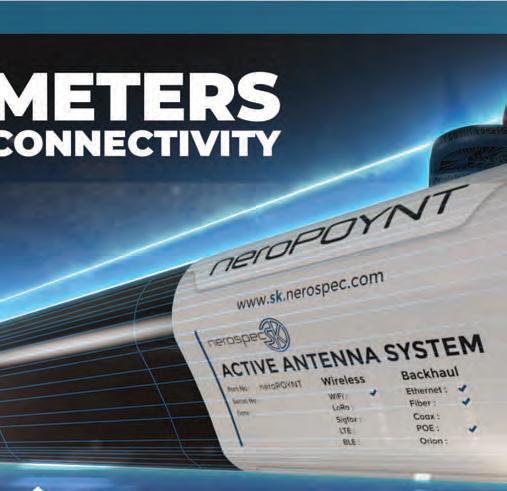
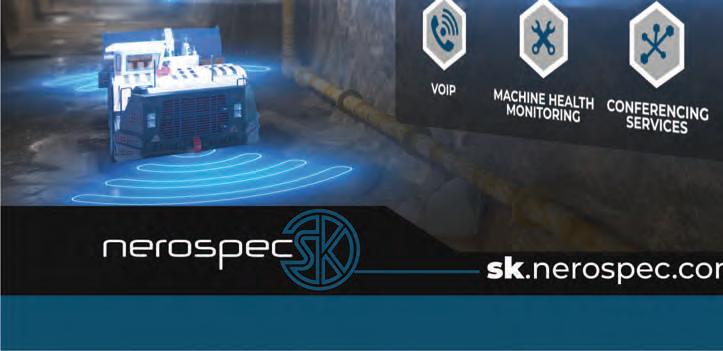
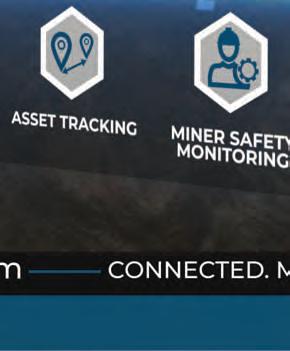

A Qualcomm spokesman said: “The use of 5G mmWave spectrum opens up a wide range of new opportunities in all stages of mining. Ultra-fast data rates to smartphones and computers powered by Qualcomm Snapdragon chipsets are critical to both improving workplace safety and increasing efficiency by instantly transferring information directly to corporate cloud storage.”
Russia continues leadership in mining LTE deployment
As shown by the Skalisty example, working directly with major Russian telecomms companies, Russia’s leading mining operators are some of the progressive worldwide in implementing private LTE wireless network capabilities to facilitate greater automation and production efficiency. The latest to roll out private LTE is gold mining major Polyus. The company exclusively told IM that it is in the process of implementing private LTE at its Kuranakh open pit operation in northeastern Siberia.
The company has signed a contract with Rostelecom, one of the largest telecomms operators in Russia for the project. In addition, a pilot private LTE zone will be installed at the Polyus Krasnoyarsk business unit which includes the Olimpiada and Blagodatnoye mines though the company did not specify the exact location for this. Finally, for locations away from mine sites, Polyus is now testing convergent technology on the basis of a GSM and satellite (Iridium) network.
The private LTE systems use 4G LTE technology but with a 5G ready network core. Polyus told IM: “We believe that these communication technologies will provide a basis for various systems relating to our operations, such as driver safety systems (anti fatigue, in-cabin CCTV, collision prevention), fleet-management systems, and semi- or fully automated mining equipment. At our open pit operations, we believe that pLTE network technology will provide a backbone network for all our digital solutions. The final decision will be taken after the full implementation of pLTE at Polyus Kuranakh and post-project analysis.”
Metalloinvest says it will launch a private LTE wireless data network at iron ore operation Lebedinsky GOK, one of the world’s largest open pit mines, in cooperation with MegaFon. “Guaranteed coverage, security, high speed and low latency data transmission will enable the automation of complex technological processes associated with iron ore mining and the production of iron ore raw materials,” said the steel and iron ore mining major. The project involves installing 13 new base stations and upgrading five existing ones, constructing new antenna towers and laying fibre-optic lines.
MegaFon will provide the enterprise with seamless coverage using the 1,800 and 2,600 MHz bands. It will provide redundancy and wide network coverage in the areas with the highest concentration of the company’s employees and equipment. Following the implementation of the project, the company’s specialists will be able to monitor the performance of openpit mine machinery and equipment even in difficult terrain conditions. The pit is 4.7 km long and 3.7 km wide, plus reaches a depth of 450 m.


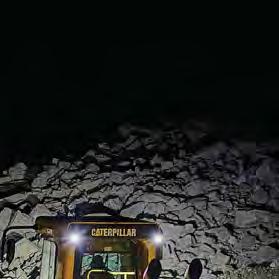
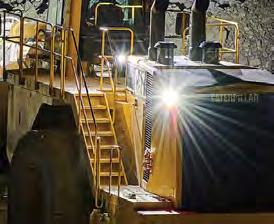


By having its own stable network, Metallonivest says it will be able to improve workplace safety by automating complex and hazardous processes. It will also be able to introduce MegaFon Trunking digital radio communications with geolocation functionality, which will be able to locate each worker in real time and enable a quick response in emergency situations.
Yulia Shutkina, Digital Transformation Director of Management Company Metalloinvest, said: “Our companies have had a long and fruitful cooperation in IT technologies. MegaFon’s services help create an integrated information environment at production facilities and implement Metalloinvest’s innovative projects.”
Natalia Taldykina, Director of Corporate Business Development at MegaFon, said: “Private LTE from MegaFon will allow the roll out of a digital circuit at Lebedinsky GOK and lay the groundwork for the introduction of promising vertically integrated solutions. This project will help the company to reduce costs by forgoing the use of other networks deployed at the enterprise.”
To ensure a stable signal inside the processing plants, indoor coverage will also be organised at the enterprise, which will make it possible to implement services based on video analytics, the industrial Internet of things, solutions for locating employees, maintenance and repair of equipment.
Hytera’s integrated LTE platform
The Hytera 4G LTE Intelligent Communications Solution for Mining it says offers “an integrated platform capable of supporting a wide range of audio, video, data and M2M/IoT applications suitable for surface, strip, open-pit and underground mining...greater investment in automation, robotics, in-pit mobility solutions, data-centric analytics and the creation of a digitally enabled workforce is key. Digitallyenabled hardware tools are being deployed to perform or improve activities that have
Nutrien deploys LTE at Rocainville
Nutrien, the world largest potash producer, now uses LTE technology at its Rocainville operation in Sascatchewan, Canada. The new LTE infrastructures deployed during the COVID-19 pandemic allow coverage both above and underground. Ambra Solutions was chosen as the supplier after testing of several potential LTE provider technologies. As part of this deployment, Nutrien has also performed several tests comparing WiFi and LTE. Ambra told IM that the results were “astonishing and shown that one LTE antenna can cover five times more distance in a straight underground tunnel that one WiFi antenna.” In addition to improving worker safety, LTE is also enabling new use cases such as tracking, remote operations and real time communications. There are also currently plans to deploy LTE at other Nutrien Canadian operations.
Brent Poohkay, Executive Vice President, Chief Information Officer at Nutrien said in a March 2021 article titled Embracing LTE for safer, nextgeneration mining that the move is part of its Next Generation Potash Initiatives – “technology improvements like automation that aim to make our operations the safest, most reliable, most efficient and lowest cost from the mine to the mill. Today, for example, 100% of the mining fleet at our Rocanville site can run without the operator present during shift changes. We’re also using machine vision technology – which allows for automated monitoring of conveyor belts – as part of a broader predictive maintenance program.”
On LTE specifically he commented: “The sheer scale of some mining operations is difficult for many people to fathom. Take Nutrien’s Rocanville operation, the world’s largest potash mine. It’s essentially the same area as Detroit, but a kilometre underground. Now, imagine trying to communicate halfway across Detroit using only WiFi. In massive underground operations like Rocanville and other mining sites, WiFi is simply not enough to power communications systems across vast areas –let alone innovative, connected technology that will transform these industries for the better. This is why we are champions for LTE technology, not just above ground, but below ground as well. Leaky feeder systems essentially two-way radios - and WiFi are currently the norm for mining sites. There are emerging technologies such as fluid mesh networks, but when it comes down to it, there’s no comparison to the potential LTE offers. In our pilots, LTE has shown higher bandwidth, speeds, and quality as well as lower latency (delays in data transfer) in our mine sites. While WiFi could theoretically meet our basic requirements for connectivity, the costs and hardware needs are considerably higher. One of LTE’s core benefits is that it provides wireless coverage over large areas with little equipment infrastructure. LTE also provides the foundation for the future of wireless communications – 5G. Though not currently available in our potash mine locations, we will be able to move from LTE to 5G with minimal cost or change to infrastructure.”
He commented on technology application with LTE: "With enhanced coverage through LTE, we can access better quality video that makes monitoring for safety and security easier, plus allows us to take advantage of current or new safety apps, for things like check-ins, emergency warnings and alerts. With LTE as the backbone, the art of the possible truly opens up. LTE gives us the opportunity to have a single pane view of our people, equipment, work and safety hazards – at less cost. Imagine never having a person out of communication range and knowing in real-time when we have an equipment or system issue. That is the mine of the future, and the next generation of our potash operations. With more coverage for IoT sensors, apps, cameras and connected devices in the field, our team can also be more efficient and productive, ultimately improving our tonnage output and our cost per tonne. At the end of the day, that means getting fertiliser to farms – and food to tables – safely and more efficiently."
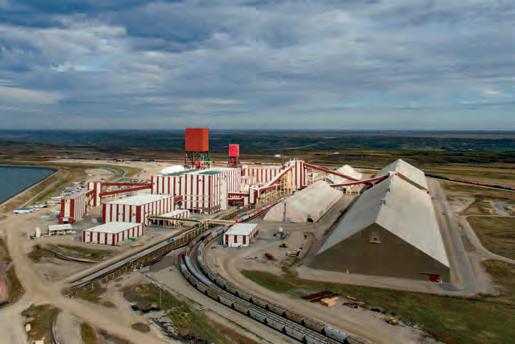
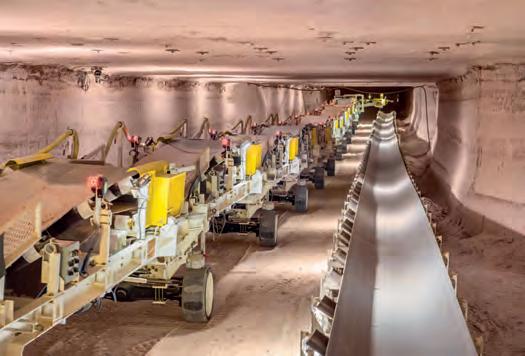
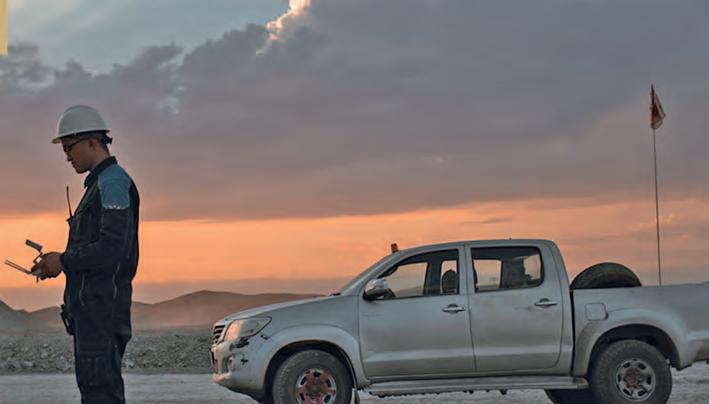
Gold miner JSC AK Altynalmas has deployed a Hytera Hytalk (PoC) LTE platform and terminals in Kazakhstan
traditionally been carried out manually or with human-controlled machinery.”
The company adds: “But too often automated processes, IT layers, communication systems and monitoring regimes operate in silos. To achieve the real benefits of digitalisation, the industry needs to become an integrated enterprise using connected platforms supported by next-generation analytics.”
Shenzhen, China-based Hytera states on the background to digital mining: “The mining and metals industry faces a number of challenges including fluctuating demand for ores and metals, excess capacity, and increased competition from competing materials, leading to weaker prices. The most accessible highquality deposits are already being exploited, forcing the industry to develop lower-quality ores in more remote regions. Mining faces more stringent environmental and safety regulations and the requirement to engage more with local communities. The industry also suffers from an ageing workforce, but is finding it hard to recruit younger people with modern technological skills. All of these factors are driving up costs. To meet these challenges, mining companies must reduce operating costs and boost efficiency, productivity and safety if they are to achieve profitability. Increased digitalisation of the industry is one way to do this.”
Field teams can be empowered by using connected audio, video and data mobility solutions, along with virtual and augmented reality applications. By leveraging algorithms and artificial intelligence to process data from telemetry and SCADA systems, mining companies can exploit big data analytics. This information will improve real-time situational awareness and decision making, as well as providing valuable data to shape future projections and strategies.
Hytera says its Intelligent Communications Solution for Mining can help the industry realise the benefits of digitisation. “It provides a highly transportable end-to-end broadband solution including terminals, network, data center and command and dispatch center. It is capable of supporting sophisticated automation, data analytics, and all the voice, video, data and M2M/IoT applications used in the mining industry.”
The fully 3GPP-compliant 4G/5G solution provides a complete wireless broadband network including radio access network (RAN), backhaul, LTE core, device and network management. Multiple services can be run simultaneously over the high throughput and resilient 4/5G network, including: Mission Critical Push-to-X (Voice/Data/Video); real-time video streaming; telemetry/SCADA; and M2M/IoT sensor monitoring. Low latency transmission rates (< 100 ms) enable precise control of remote automated operations.
The various technologies can all be managed using one unified command and visualised dispatch centre and a remote control centre, which receive and distribute real-time information from and to the field operations. The network infrastructure also supports intelligent data analytics and artificial intelligence applications.
Hytera says its solutions have been successfully applied in the mining industry where they have helped customers solve their communication problems. For example, gold miner JSC AK Altynalmas has deployed a Hytera Hytalk (PoC) LTE platform and terminals in Kazakhstan, while Wanbao Mining's Letpadaung copper mine in Myanmar is using an integrated Hytera DMR and LTE solution. "Hytera’s Intelligent Communications Solution for Mining provides instant voice, video and data communications to deliver team members the information they need to know to carry out their work. Hytera’s communications solution




supports a rich ecosystem of real-time intelligence, which enables teams to work more efficiently, productively and safely."
Huawei LTE comes to Toquepala
The Toquepala copper mine, located in the department of Tacna, continues to improve its technological infrastructure with the deployment of a new Huawei LTE network that will bring 4G connectivity to the operation and will allow it to be at the forefront of the use of new and advanced technologies within the mining sector. Toquepala is part of Southern Copper Corporation, a subsidiary of Grupo Mexico.
“This decision to work with Huawei allows us to advance digitalisation towards Mining 4.0, reinforcing the automation of our processes, making it possible to remotely carry out actions that are currently face-to-face in a broad spectrum, which translates into a more efficient management of operations. It is very important that the possibilities of new technologies are always on our radar and we are at the forefront,” said Jorge Hugo Meza, General Director of Operations of Southern Copper Corporation.
Given how important the mining industry is for Peru, Huawei has created a specific team dedicated only to addressing issues related to information and communication technologies (ICT) and Operation and Control Technologies (OT), in the mining sector, becoming one of the strongest wireless technology providers in the country, not only as a hardware and software provider but also as a service partner for all implementations, operations and maintenance. 5G networks will be one of the most important key technologies in the new era of autonomous and remote mining and now Toquepala is taking a big step towards that goal: promoting this network and being a benchmark in the region in how 5G benefits the industry.
“It will allow a high-tech network that will be able to support many more processes within the network, and added to the new changes here in Peru, we will have a very high-speed network,” highlighted Bao Getang, Huawei Peru CEO.
MST Global - bringing Bluetooth underground
The underground mine is a challenging and unique environment, and without the right network infrastructure in place, reliable connection to the surface is difficult. “Personal tech, like smart phones and home Wi-Fi, have led us to expect ease and freedom with connectivity because on the surface we are GPS enabled,” MST Global Chief Executive Haydn Roberts said in a recent blog post.
“Underground, that is just not possible, and we need to overcome this problem by building the right network infrastructure for your needs. At MST Global, we’ve been enhancing underground connectivity for over 30 years. Our award-winning network infrastructure solution the AXON suite has recently undergone some upgrades to enhance functionality and connectivity for users.”
The AXON suite is a modular, multifunctional platform designed to support existing and future wireless communication, tracking and automation technologies through highbandwidth fibre.
“We’ll start at the end, with our newly rebranded AXON mesh and AXON mesh+, which is a highly acclaimed portable device that is a favourite among underground miners globally. In a sense it is at the end of our network platform, providing the ‘last mile’ connectivity in the dynamic mining face areas.”
AXON mesh is essentially a pick-up and go ‘briefcase’ sized piece of technology that is perfect for when cabling and wiring isn’t an option. “It’s designed for temporary projects when your team is wanting to explore a new area underground or a high-risk area of a mine, and deployed to maintain connection to the surface without the costly overheads or timely exercise of installing cabling.”
In 2021, this piece of technology has undergone an upgrade, with the launch of AXON mesh+ with BLE (Bluetooth Low Energy) connectivity. MST Global Senior Product Specialist Dirk Eisner, who has played a key role in this technology rollout, said the introduction of BLE was a game-changer for underground mines and the tunnelling industry.
“The main reason for this is Bluetooth is a cost-effective solution,” Eisner said. “Particularly if you start tracking assets, it becomes expensive to track everything with WiFi tags. Using Bluetooth tags can be very effective and allow you to deploy these devices in areas that wouldn’t have previously been very difficult to do so. In face areas where you constantly have blasting scenarios, you can’t bring your devices or equipment forward into these production areas where it’s the beating heart of the mine, but these are the locations that you really want to track your equipment and your people.”
He adds: “Prior to AXON mesh, you couldn’t easily get in there because you would have to run it in and pull it back out when you blast and it was just too hard, people wouldn’t do it. Having something you can grab and walk forward and drop one down, and drop another one down if you need to extend it further, makes it super flexible. It’s a really exciting addition.”
The benefits of the AXON mesh include: it’s lightweight, small, portable; simple to deploy; fills connectivity and communication gaps between the mining face and fixed infrastructure; and enables real time data collection from hard-to-reach locations.
Next up is MST’s AXON air; a versatile Wi-Fi access point designed with power and flexibility in mind.
This year, BLE (Bluetooth Low Energy) beaconing and receiving BLE broadcasts have also been added to the AXON air to create the AXON air+.
“Like the AXON air, the AXON air+ can be daisy-chained via its PoE+ port and the combination of radio and antennas in one package, which makes installation simple and inexpensive. AXON air+ features antenna diversity and integrated support for geolocation.
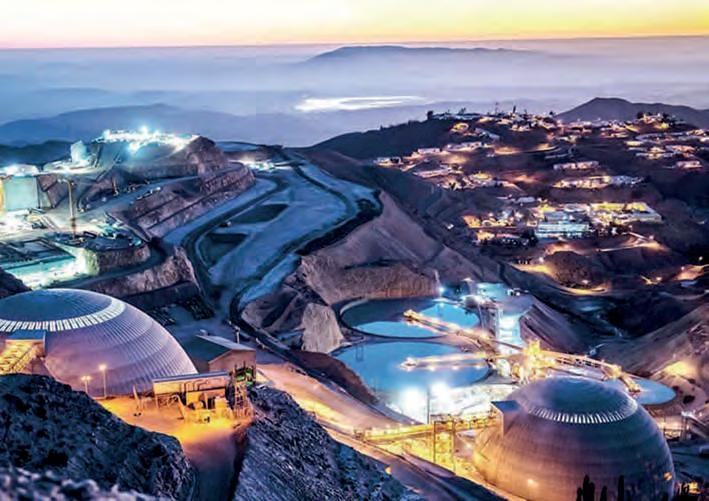
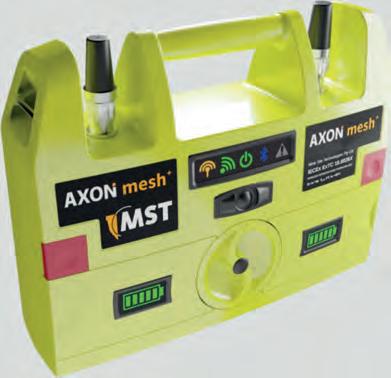
MST Global’s mesh-portable wireless access point is an industry leading intrinsically safe, mobile, self-meshing, network extender and access point. BLE (Bluetooth Low Energy) beaconing and receiving BLE broadcasts have now been added to create the mesh
Its advanced feature set enables reliable, highbandwidth, wireless data and voice coverage throughout the mine or tunnel.”
The AXON air+ broadcasts as a BLE beacon and MST’s FARA workflow management solution uses this information to determine the location of the SMART device that FARA is running on and therefore its location in the mine or tunnel.
The AXON air+ also receives BLE broadcasts from tags and this information is used by MST’s geolocation software to locate these BLE tags and their associated personnel and/or equipment in the mine or tunnel.
The AXON air+ can be mounted directly onto an AXON core unit or independently to a rock surface. The AXON air+ has two PoE+ ports that allows it to be daisy-chained eliminating the need for external switches or power supplies. This also enables Wi-Fi and BLE coverage to be extended into hard to get to places without the need for fibre – for example, workshops, declines and the last mile – reducing the overall cost of the solution.
MST Global says both the AXON mesh and air models complement each other and can both be used in addition to the AXON core unit. Eisner said since the introduction of BLE functionality, the AXON products would also work even better with other technologies within the MST Global product family. “We have a product called FARA, which is a productivity enhancing product which we refer to as ‘reverse tracking’ relying on Bluetooth technology,” Eisner said.
“By bringing Bluetooth as a comprehensive underlying technology into our AXON stack, it now becomes far more flexible and fluent, so you can use and exchange these devices whichever way you want without losing additional technology. Prior to it, you may have had specialised BLE readers. Now there is one device that does it all. Our AXON products are a bit like a Swiss army knife of wireless communication.”
Its AXON network infrastructure also comes with the addition of uninterrupted power supply.
“We normally supply power supply and uninterrupted power supplies (UPS) with our systems. The main reason for that is obviously, any IT solutions, particularly if they are safetybased, really need what we call five nines uptime,” Eisner said.
“This is also a main feature of these solutions that distinguish us completely from other technology providers. Power is not easily available underground, there are no sockets or anything around, so it becomes difficult to get hold of power but carrying that through the same communication cable is a very convenient way of doing it.”
Maestro Digital Mine helps Fruta del Norte monitor paste operations
Fibre presents a number of challenges to the underground mining industry. Terminating fibre underground is difficult, time consuming and requires expensive specialised training, which is frequently, the biggest contributing factor limiting the advance of connectivity. These types of delays inhibit the agility and pace needed to enable the digital mine and bring communications to the face.
Nokia Industrial-grade Private Wireless brings new levels of automation and innovation to your mines.
Attention, miners: you don't need to wait for 5G to go digital.
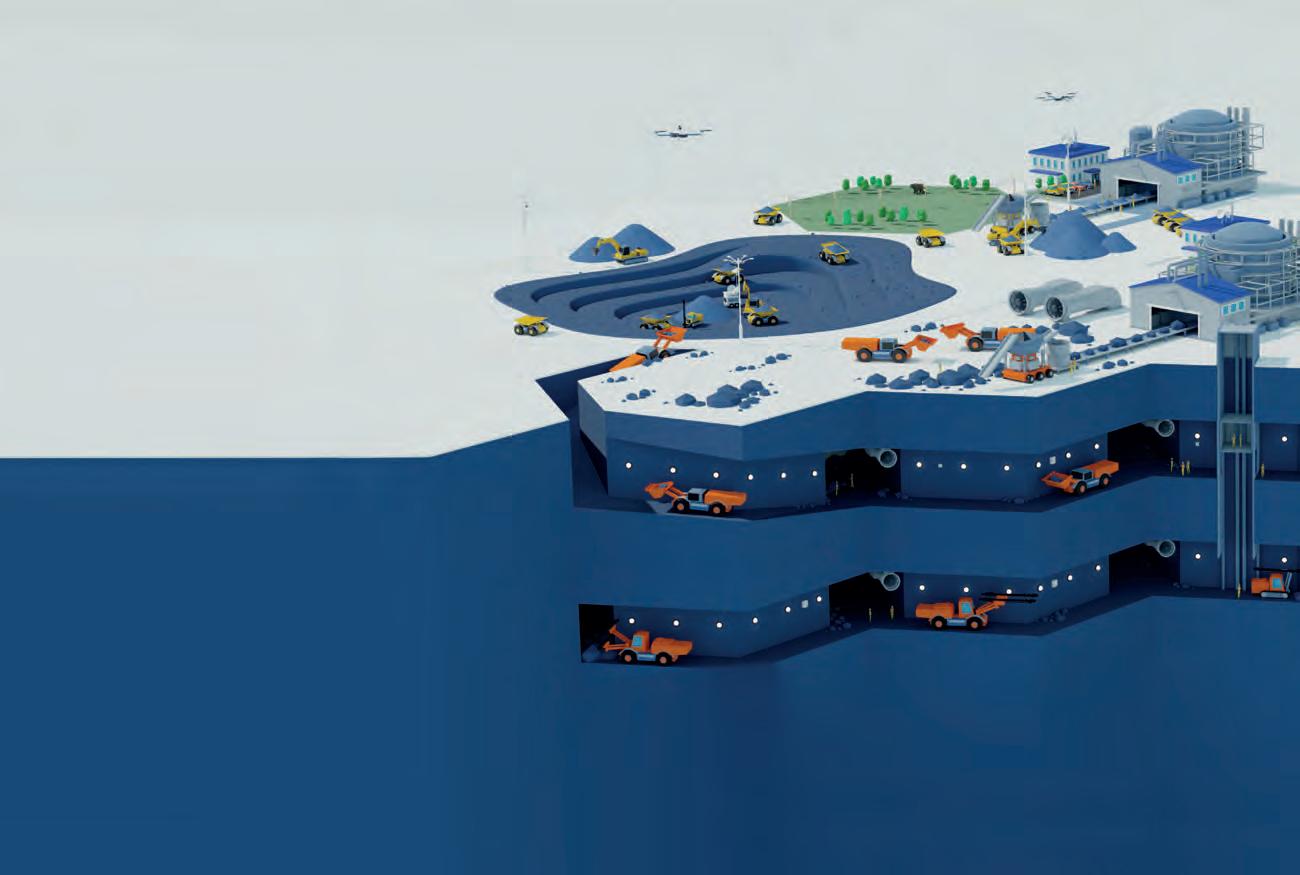
gain 360° situational awareness, manage assets, safeguard
Nerospec SK introduces neroPOYNT
Underground wireless connectivity is the bedrock of a fully connected mine. Nerospec SK told IM: “Mine machines and their accompanying processes produce an endless array of valuable insights, and that value is only enhanced when it is shared instantly - and to the surface - without having to stop processes and productivity. Wireless underground communication is the fundamental enabler of modern safety, data analytics, and machine control. It has long been a challenge to deliver reliable Wireless Fidelity (Wi-Fi) communications throughout a working mining tunnel. Previous attempts to solve this critical enabler of a connected mine, comprised of multiple devices all housed in separate enclosures and the use of off-the-shelf office type antennae, that resulted in less than desirable coverage.”
Tunnel characteristics have a considerable impact on wireless signals strength and reach. “Considering the various engineering challenges, safety concerns and industry regulations in tunnelling projects – a robust fit for purpose wireless access point with special consideration in the selection of antenna is critical in becoming a fully connected mine.”
Nerospec SK has introduced the neroPOYNT, a directional wireless access point and custom mine antenna specifically developed for mining tunnels. "Delivering revolutionary underground Wi-Fi connectivity, in even the harshest mining environments. Designed to enable underground communication, by supplying multi-band Wi-Fi, LoRa, and Bluetooth 5 access points."
The company says what began as a dream and developed into a global challenge, culminated in June 2020 with the installation of two neroPOYNTs in a South African chromite mine with a tunnel height of 1.6 m along the conveyor belt path and achieved exceptional results of up to 635 m within the mine tunnel. This unlocked the mines’ ability to pull machine insights from the neroHUB, a heavy machine controller and interface. It thereby allowed critical machine health and productivity insights to be shared with a remote control-room and enabling immediate operational decisions. The addition of six new neroPOYNTs, late in 2020, led to enhanced machine insights and operational control for more than 100 machines.
Later in 2020 when a salt mine in Germany wanted to achieve usable underground WiFi coverage, they faced the challenge of a high degree of iron in the salt horizons. Previous attempts to achieve effective wireless coverage supported by universities and other technology experts failed to achieve wireless coverage of more than just a few metres. In August 2020, Nerospec SK installed six neroPOYNTs and was able to achieve more than 800 m of tunnel range coverage. “This consistent and reliable wireless coverage allowed for instant communications within the machine network, including localisation coverage and mobile service coverage that included WhatsApp and underground conferencing services. The wide-ranging nature of the coverage offered a plethora of optimisation options. ranging from preventative maintenance to operator analytics and much more.”
When Nerospec SK’s world leading range of tunnel and wireless mine infrastructure products are paired with the HUB range of loggers and controllers - "connected machine insights, machine health and productivity insights are shared, in real time, unlocking previously unseen levels of Short Interval Control advances." With the addition of a specialist machine mounted neroMODA antenna, the on-board HUB loggers and controller’s connectivity range is greatly increased, creating a wider area of opportunity for the instant sharing of insights, machine to machine communication and unlimited autonomous opportunity.
The company concludes: "Mine wide wireless communication enabled by a high bandwidth device that is designed for harsh environments, offers a myriad of fit for purpose applications. With the addition of fit for purpose IoT beacons, such as the neroPIN and neroDUST, asset management is automated and enables pin-point tracking (localisation) of tunnelling assets. Applications such as voice communications using industrial VoIP phones or even wireless video via IP cameras are all applications that can operate on this all-in-one solution. Where optimisation is the goal of a connected mine, revolutionary underground communication is the enabler."
Nerospec SK says its expertise is fully focussed on making tunnels and mines, machines and workers safer, efficient and more productive by crafting cutting edge communication, automation and digital tunnelling and mining solutions.
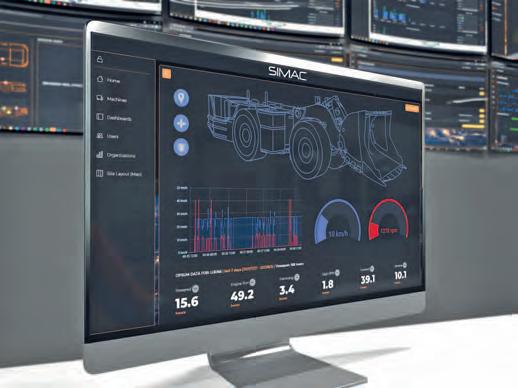
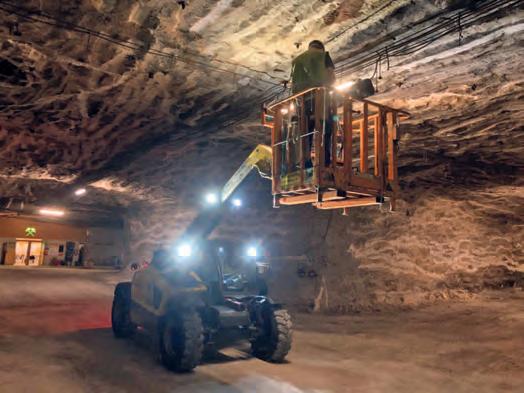
Maestro Digital Mine’s Plexus PowerNet™ delivers a high speed, low latency digital communication network that provides PoE+ power to Wireless Access Points (WAPs), cameras and any other IP based device. The system eliminates the need for costly outside fibre optic contractors and can be installed and maintained by any internal tradesperson. It also addresses the challenges associated with extending fibre optic-based communication backbone solutions for ‘last mile’ data applications.
Lundin Gold’s new Fruta del Norte underground gold mine in Ecuador integrates Plexus PowerNet™. It developed a 105 m3/hour paste fill plant to help reduce surface mine tailings by reclaiming it for ground support underground. Paste fill generation and delivery
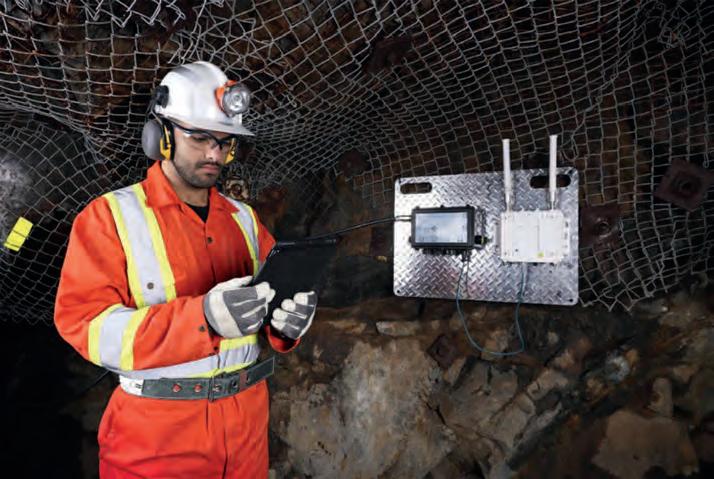
Lundin Gold’s new Fruta del Norte underground gold mine in Ecuador integrates Plexus PowerNet™ to enable monitoring of its extensive paste backfill operations
is challenging and if not properly designed and monitored can result in plugged distribution lines causing production delays and significant operating expenses.
To mitigate the plugging, it is critical to monitor the paste fill underground at each pour location using a high definition camera and powerful light so that operators can view the delivery from the surface control room and confirm the paste mix in real-time. This type of monitoring requires both high data rates and power normally achieved by running both fibre optic cable and line power cable.
Lundin Gold decided to use the Plexus PowerNet™ because it uses a single conventional copper coaxial cable which provides power and data. Plexus PowerNet™ delivers a high speed, low latency digital communication network that provides PoE+ power to IP Cameras, PoE+ lights, Wireless Access Points (WAPs) and any other IP based device.
Brad Howe, Senior Mine Engineer, Lundin Gold stated: “It is easy to install and train the miners on- site to use the Plexus and does not require an electrician which reduces the cost and time to integrate into the mine. I can just have the miners advance the Plexus to the heading and terminate.”
He adds: “Now we have a single coaxial cable going 500 m from the substation where we have installed the power supply, Plexus A node (starter node). Now that it is all set up, the miners can run the Plexus cable themselves. It is paramount that enabling technologies must be simple, robust and straightforward for the workers. The Plexus is super robust, unlike fiber which is fragile and time consuming to terminate, you don’t have to be super delicate with it. It is built for the underground environment.”
There are two locations for where the mine needed to put the pour point cameras for monitoring paste backfill – at the first point of the stope and directly below at the barricade. The cameras remove the worker from the active area, keeping them safe and free to work on the rest of the system or in other areas that require



SENTINELTM
Endless Possibilities. Endless Savings.
IWT’s wireless solutions provide more than just reliable voice, text and data for real-time tracking, gas monitoring, analytics, and remote sensors. Combining multiple systems into one rapidly deployable network, IWT customer mines experience annual cost savings for life.
Fewer infrastructure components = Less maintenance No wires between devices = Reduced labor hours 100% recoverable for redeployment in other areas
Always Thinking. Always Solving. Always Innovative.
Profi t
Cost
Ericsson – uplinking mining to 4G and beyond
Ericsson recently launched its latest Private 5G solution which offers secure and simple 4G LTE and 5G Standalone connectivity to mining and other industries. IM Editorial Director Paul Moore spoke to Filip Mestanov – Industry and Ecosystem Manager, Mining and Jeff Travers, Dedicated Networks Sales Manager, about Ericsson’s breadth of experience in mining and why mining companies are switching to 4G/5G in greater numbers
Q Why is LTE use in mining accelerating?
FM: There are sometimes different drivers for LTE network adoption in surface open pit and underground mines but overall, of course LTE and 5G provide greater reliability of communications – often they have use cases where they have tried to implement technologies using other wireless networks which work fine on a small scale but when they have tried to scale up, such as with a larger number of autonomous machines, for example, there have been pitfalls so there is a realisation that these other networks do not meet their reliability or availability requirements –it may be the original network was not built to meet these new demands or that there are technical issues during handovers. Also LTE can cover a large area with only a relatively small number of nodes – even a factor of ten less nodes required to cover the same area which is a major TCO factor. LTE also provides a futureproofed platform on which you can build 5G going forward to be able to handle new technologies and scale for them as and when they are available through upgrades without having to swap out the network. Our solution can also handle use cases that other wireless technology cannot, particularly in relation to reliability of data. Finally unlike other wireless technologies developed by one party, often proprietary, which might only address one particular use case, whereas our technologies from the beginning come built with the notion that there will be a variety of use cases and allows for some of those to be prioritised over others – for example critical comms over voice calling.
Q Is the rollout of autonomous fleets a big part of this?
FM: Yes, it is becoming a more mature market with a lot of mines now using or trialling autonomous trucks. With autonomy, especially underground where elements of loading and dumping are still manual with the tramming autonomous, there are still high resolution cameras sending a lot of video footage back to the monitor or operator – here LTE has a much greater ability to handle this real time video than other wireless technologies. And arguably the ROI in implementing LTE whether on surface or underground is quick through the productivity benefits of the autonomy it is enabling where it is applied.
Q LTE in mining tends to be a collaboration approach between the LTE technology provider, a local telecoms group, an integrator and the mine itself – how do these projects come together?
FM: The telecom operators definitely play a big role to start with as they are normally the ones selling a solution direct to the mining companies and of course they are the ones with the spectrum assets in the country concerned. We usually sell our technology to the telecoms operator who then engage with the mining customer as they are the established entity in that country or region. They often have their own value add offering such as surveillance options. You also mention the systems integrator –they also play a crucial role – whether it is a new SI, a mining company SI or an SI already working with the mining operator. Examples with a lot of mining LTE project experience include Ambra Solutions based in Canada and Challenge Networks in Australia to name just two. There may be a use case specific partnership – if you are implementing a drone inspection project underground, you will usually have a specialised company that builds the drone equipment and deploy infrared or other mapping technology on it. We may also partner with one of the mining equipment OEMs or contract miners. But the general answer is yes, there are usually several partners involved. The telecoms company normally leads the deals, and then you have the SIs plus the network technology provider such as ourselves. Ericsson has an all-inclusive approach to partnership, so we partner with all kinds of companies around the world.
Q Often LTE seems to start with a trial network in one part of the mine –is this the norm?
FM: Yes – it is common to have a commercial trial prior to a full blown deployment which is mainly the customer looking to justify the investment cost by testing the technology and making sure it will be able to meet the requirements whether that be autonomous mining trucks, remote control drills or something else. We still carry out a lot of proof of concepts and commercial trials. However, today things have moved on from 2016/2017 in that major mining companies like BHP and Rio Tinto are already using LTE widely so in a sense it is easier for smaller and midtier miners to trust the technology today and make the choice to go straight to a full mine system. And increasingly a mining company may have LTE deployed at a mine in one country where they have seen the value and then want to replicate that setup elsewhere without requiring a trial. Another point is that in many cases there is a particular area of a mine that they want to trial a new technology use case in – such as a section of the pit where they are testing autonomous trucks – so will opt to start with LTE deployment there, which effectively acts as a trial.

Filip Mestanov, Ericsson Industry and Ecosystem Manager, Mining Jeff Travers, Ericsson Dedicated Networks Sales Manager

Q If you were to try and summarise from a technical point of view why today’s mining industry needs LTE/5G, would you say low latency would be at the top of the list?
JT: When you implement autonomy, you also need the ability to fall back on remote control which brings a latency requirement which did not exist before. This is the type of thing being tested in experimental subset areas that Filip mentions. The main drivers are latency but also uplink throughput. FM: Definitely uplink throughput is a major point. When you start scaling up the number of vehicles you are operating remotely, then you start needing a lot more cameras and the throughput that comes with live feed in particular. Then its low latency but also predictable and stable latency continued 0n page 98
the manpower. Monitoring the paste backfill process can now be done by the control room operator.
“If there is a back up in the paste flow, that is a sign that something is wrong. It makes sense for the control room operator to receive this vital information with clear images from the computer, in real-time, to determine the status of the paste backfill pour and resolve the situation quickly and safely. Secondly, monitoring the barricade is very important to be able to see cracks or leakage, especially during the pour. It has become best practice to not have any person downstream of the barricade during the pour in case of a catastrophic failure.” Lundin currently has four portable monitoring stands including a PTZ (pan-tilt-zoom) IP Camera, PoE+ light and Plexus C node.
Paterson & Cooke (P&C) designed the paste fill plant and distribution system. Rob Brown, Director & Principal Engineer, after providing onsite commissioning and training services states: “The Maestro monitoring system enables the surface operator to see the quality of the paste at the stope in real-time and if the paste is flowing in steady state or surging so the plant performance can be verified. The difference between paste and flush water can also be detected visually. The software allows the operator to select from multiple cameras and can take either a video or pictures of the pour at any point in time.”
As a result of the Plexus, instead of having a miner dedicated to watching the pour, that person can now be installing pipe or the barricade reducing manpower to focus on other tasks at hand. Howe states: “The Plexus helps us take people away from a risky area as well as having eyes on the pour during our three shift changes. Having Maestro equipment gives us the confidence that we will have a successful pour.” Becker Mining further enhances underground comms offering
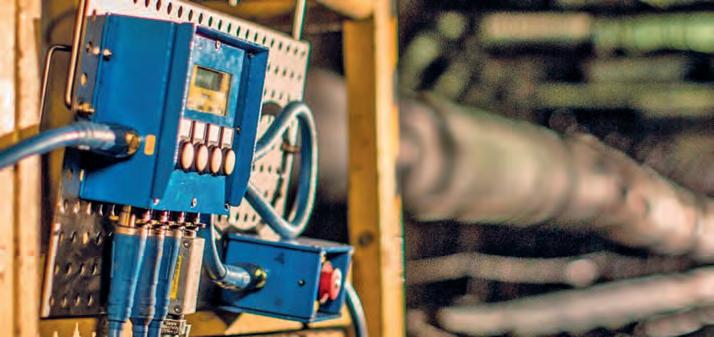
Becker Mining Systems' latest product offering in underground communication solutions is smartcom LTE, a private underground LTE network for all mining clients. “With a growing demand for automation and integrated data solutions in underground mining, Becker Mining has taken leaps in recent years to develop a suite of LTE technology ready to accommodate client needs and challenge worldwide competitors. Similar to existing leaky feeder technology, smartcom LTE can provide high speed data at all levels of the minevia radiating cable and accompanying technology for ensured quality.”
Becker Mining says smartcom LTE can be used for remote applications, mission-critical communications, real-time asset tracking/fleet management, personnel tagging & tracking, data insights for efficient mine operation management and most recently LTE blasting. Becker Mining is also currently working on upgrading its LTE product offering to reduce the cost of LTE systems for its clients and distributors. This information will be released as soon as it becomes available.
The group is also now selling an underground gas monitoring solution package meant to increase production while maintaining safety protocols. Situated at the face of underground tunnels, the solution is used to monitor gas emissions after blasts and have the data reported to the mine's SCADA package through the leaky feeder system, circumventing the need for additional infrastructure. This solution is intended to ramp up production while adhering to any mine's safety procedures in place. “After a blast, it typically takes clients anywhere from one to two hours to return underground and restart operations. With this system, we are hoping to decrease post-blast turnaround time by providing an in-depth analysis of the gases from the area, which will in turn boost production as workers will return quicker. The preliminary results from our tests have been encouraging and we are excited to present this to our clients," says Joshua Dandurand-Parent, Salesman at Becker Varis, the Canadian Division of Becker Mining Systems. The solution package includes a smartsense Single Sensor Gas Monitor (SSSG), the newest gas monitor in Becker Mining's smartsense gas monitors, an inline data module, used to carry the gas monitor's data over the leaky feeder system, and a surface data module, which communicates with the in-line data module.
UNLOCKING THE POWER OF YOUR DATA
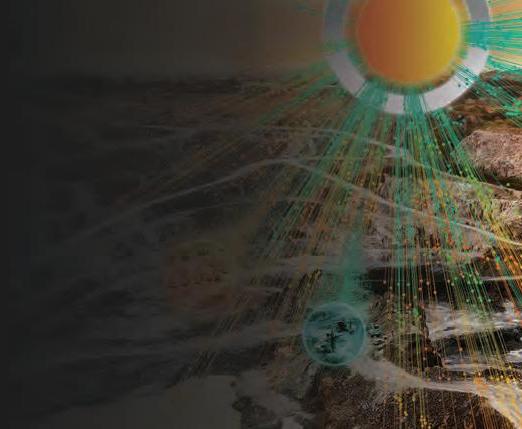
INDUSTRY PLATFORM
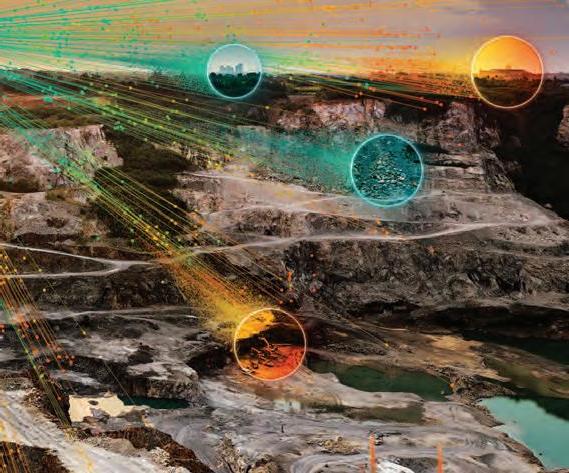
Visit us at MINExpo booth N-528
continued from page 96
since if you are operating a machine remotely with lagging there can be issues of nausea – you want to be able to operate it in the same manner as if you were sitting in the machine. This is typically somewhere between 50 and 100 milliseconds. JT: We’ve been testing this extensively with Epiroc for underground activities. Generally, below 75 milliseconds the operational control is still perfectly smooth. But above 100 it becomes difficult for the operator.
Q What about greenfield versus brownfield LTE deployment? Is it only worth doing in a new mine? Are existing mines are better to keep the network setup they have?
FM: It depends on the situation – an existing network may be working but they may be facing some issues – it is not working as well as it could be. There might be interruptions which are affecting operators negatively. Our comms solutions provides a backbone for you to be able to run new technologies smoothly without interruptions, video freezing etc. JT: You can break use cases into three categories – one layer being what mines are already doing today – you might have sensors all over the mine and some light automation where vehicles are just sending out their position. These don’t have a heavy network impact. Then you have full automation with heavy uplink live cameras & low latency requirement for RC input during mucking for example. Then you also now have connected or digital workers – where they are tagged, workers interacting with technology, such as remote maintenance assistance tools required streamed video, and technology being aware of workers. The types of systems that first responders such as police forces and fire services currently use. These need a very robust comms network. FM: Another point is that if you compare 4G/5G in terms of downtime – it is much improved over other wireless network technologies. Mines all need the geographical redundancy that it provides in terms of reliability –it will never be the cause of stopped production for example. The decision in terms of a brownfield mine to invest in LTE will depend on the efficiency of the network and the extraction you already have. Also if a mine has gaps in network coverage today, this can still make the investment cost in LTE justifiable. And often it is on top of the existing network infrastructure to make new technology use cases possible –often things like voice calls will still use the current comms setup. JT: There is a discrete moment when remote control operation is just fundamentally unworkable , let’s say at above 100 milliseconds, and that will be the case with many of today’s networks. So if you are going to implement automation in a big way then you face a comms turning point and need to design for this.
Q Can you give some examples of how Ericsson works with the major autonomous mining equipment OEMs? How actively do they get involved in furthering comms solutions with customers wanting to apply automation?
FM: Of course, the OEMs are the major equipment suppliers working closely with these mines who need to have the confidence that whatever new technology and equipment is being introduced, that it will work effectively over our systems. JT: And it can be more than drilling or loading equipment. A good example is the essential role played by technology from the likes of ABB in ventilation (which is a key economic parameter for an underground mine of course), and these systems are also being supported by Ericsson LTE networks. Other partners include companies supplying positioning or digital modelling solutions for mines. For all mine equipment manufacturers we want to enable their technologies so that they know Ericsson recently launched its latest Private 5G solution which offers secure and simple 4G LTE and 5G Standalone connectivity to mining and other industries
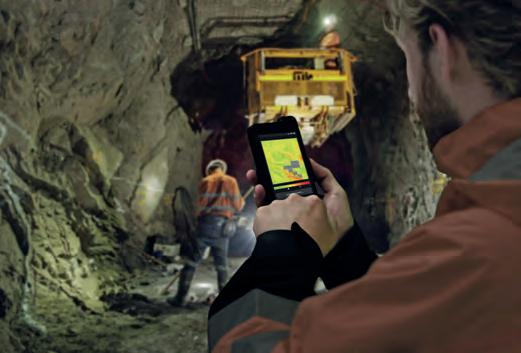
the network is going to perform with their next generation solutions.
Q Can you comment on any running mining projects that are using Ericsson LTE networks?
FM: Boliden Aitik in Sweden is a great example as they were looking for high levels of efficiency plus have a lot of plans for mine automation. Already today it is one of the most efficiently run copper mines worldwide. Telia has provided that solution to them based on 4G technology from us which can be upgraded to 5G over time. And we are working with them on new things – their blasthole drilling as an example is already quite autonomous already but the explosives charging is not –and this is something they are working on. We have also had success with several major mining clients in Russia – Polymetal’s Nezhda open pit gold mine in Yakutia, Uralkali’s BKPRU-2 underground potash mine and EVRAZ’s Sheregeshskaya underground iron ore mine are three sites where Ericsson LTE technology has been deployed by leading Russian telecoms operator MTS. These are major mines looking above all to maximise operational performance. MTS has a very good existing commercial relationship with these miners so that helps. The mines also have a very good vision of what they what to achieve and what equipment they want to take autonomous, and in which part of the mine.
Q What differentiates the Ericsson LTE solution versus others on the market?
FM: First of all we are a 140 year old company which carries some weight by itself! Other groups have evolved LTE capabilities through acquisitions but we are still the same Ericsson. From a technology and commercial perspective, we have won more than half of the current 5G contracts around the world, not just in mining but across all major industries including many critical service providers. Our good relationships with numerous telecommunication service providers worldwide removes any issues with spectrum or regulation for customers. JT: The system and extreme network performance is due to many parts of our technology but to take an example our radio scheduler network capabilities have been built up over years in-house, to ensure maximum network performance under load, something WiFi struggles with. When you step up into full heavy equipment automation you need the throughput and latency that comes with that. And it will just become more so as you have more digitally enabled workers coexisting with autonomous equipment. While the numbers of miners working in the active minesite may continue to fall as they move to offsite control centres, those that remain will need all the digital tools at their disposal.
NLT's N-Connex continues growth
Managing Director Europe at NLT Digital Solutions, Ian Turner, says the company has yet again seen significant and ongoing growth with its rugged, modular, IP67-rated mining and tunnelling networking solution N-Connex solution over the past year, despite the COVID-19 pandemic. “Our unique N-Connex platform , which provides a fibre Gigabit backbone, Ethernet and WiFi connectivity has ticked many boxes for its broad client base and combined with its software applications resolves many typical mine issues in a very cost effective manner.”
N-Connex is specifically designed for harsh environments, like underground mines. The system is rapidly deployable due to a userfriendly, rail-based mounting system and modular approach. Combined with preterminated fibre and ethernet cables a mine level network can be quickly deployed and, just as importantly, easily maintained thereafter. “The IP67 rated modules do not require additional enclosure or mounting hardware, so the solution is very scalable and easily expanded. Another proven advantage is that installation and maintenance can be carried out non-IT specialists, for example by mine electricians.”
Being WiFi and Ethernet standards compliant, any IoT devices can easily connect over the NConnex system and NLT is also seeing an expanded range of solutions from voice communications to remote WiFi blasting being successfully deployed. “Control and monitoring of equipment such as fans and pumps has also grown in the past year with the ease of connecting PLCs to N-Connex. There is also a specific N-Connex digital or analogue I/O module to connect equipment that does not currently have a PLC or connectivity. “Additionally, tracking, data communications, video monitoring, gas and environmental monitoring, emergency management though the dedicated evacuation and alarm modules are all supported and implemented in many mines.”
Turner says teleremote of underground vehicles has been a big driver in the WiFi market. “Over the past two years we have seen more and more mines move the vehicle operators to the surface and controlling their vehicles via remote. This not only reduces the amount of workers underground but also increases productivity with less downtime.”
Over the last year NLT has had many new large installations around the world in mining with heightened interest in particular in Europe, South America and Africa. NLT Europe’s newly opened offices in Germany deployed one of Europe’s deepest mines in the UK with over 35 km of network and WiFi infrastructure. This included more than 40 NConnex nodes and 140 Bolt access points, ensuring 100% WiFi and network coverage from pit bottom to the working faces. In Peru, a successful proof of concept trial was deployed with the help of NLT's Peruvian distributor Almax at Minsur's underground mines to supply mine-wide network and WiFi connectivity and to enable the deployment of Mobilaris productivity software.
Turner adds: “Over the next month N-Connex will also have some new products added to its solution. One of these products is a new access point called the Lightning Bolt with 2.4/5 GHZ, Dual Stream MU-MIMO and Bluetooth on board. The Lightning Bolt is a compact dual band outdoor and underground wireless access point. It is equipped with two N-Type antenna connectors to fit an assortment of industry standard antenna options. Powered by gigabit PoE, a single Cat6 cable provides network connectivity and power, making installation easy and intuitive.” Additionally, the low power design ensures 802.11AC WiFi can be achieved at up to 300 m from the NLT Distribution Module. "The secret power of the Lightning Bolt is the built-in WiFi tracking function. When paired with NLT’s Digital Mine software and NLT WiFi tracking tags the Lightning Bolt becomes a powerful tracking device. It is capable of tracking personnel, vehicles or assets that are in the proximity of the Bolt.”
NLT is set to release its latest N-Connex product - a new access point called the Lightning Bolt with 2.4/5 GHZ, Dual Stream MU-MIMO and Bluetooth on board
IM
